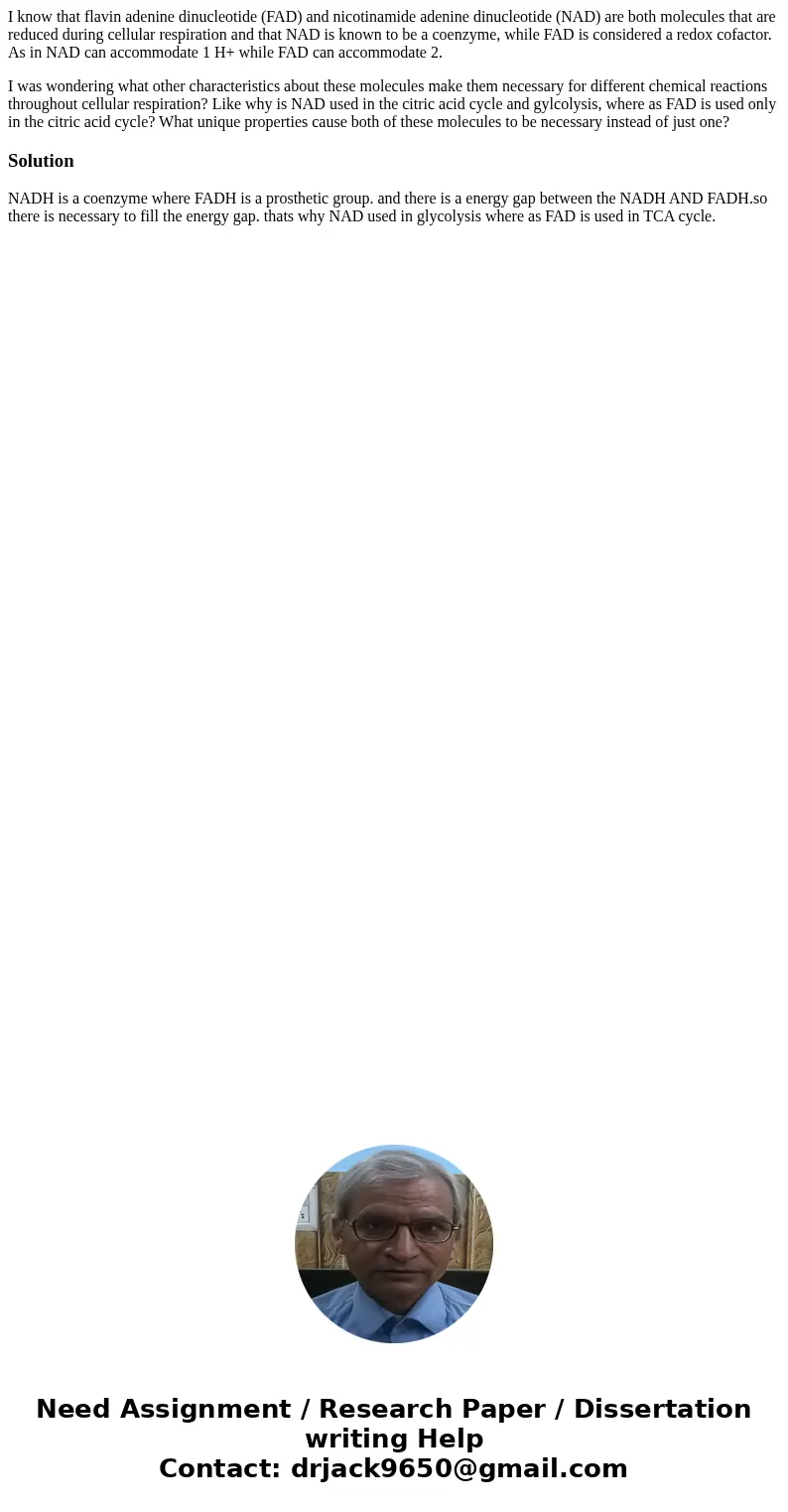I know that flavin adenine dinucleotide FAD and nicotinamide
I know that flavin adenine dinucleotide (FAD) and nicotinamide adenine dinucleotide (NAD) are both molecules that are reduced during cellular respiration and that NAD is known to be a coenzyme, while FAD is considered a redox cofactor. As in NAD can accommodate 1 H+ while FAD can accommodate 2.
I was wondering what other characteristics about these molecules make them necessary for different chemical reactions throughout cellular respiration? Like why is NAD used in the citric acid cycle and gylcolysis, where as FAD is used only in the citric acid cycle? What unique properties cause both of these molecules to be necessary instead of just one?
Solution
NADH is a coenzyme where FADH is a prosthetic group. and there is a energy gap between the NADH AND FADH.so there is necessary to fill the energy gap. thats why NAD used in glycolysis where as FAD is used in TCA cycle.

 Homework Sourse
Homework Sourse